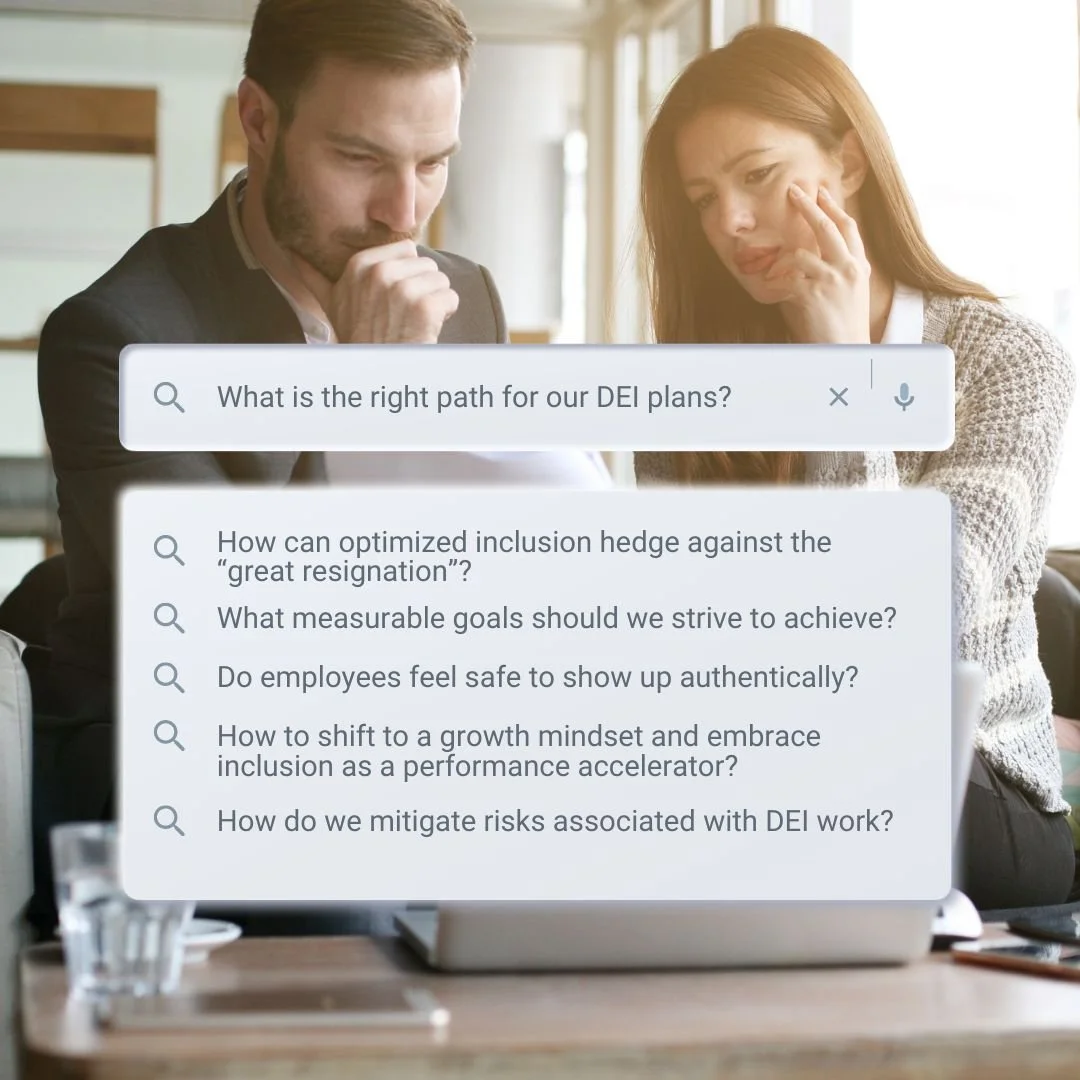
Inclusion Check-Up
The Inclusive Organizational Assessment
Many leaders are grappling with these questions.
If you’re one of them, you’ve come to the right place.
We assess your company's current state of inclusion and guide you in defining and achieving an optimized future state.
“Define the problem you need to solve first, then use data to inform solutions, not the other way around.”
— Melissa Majors
To optimize inclusion start with an objective analysis, a “check-up” of performance across key areas of focus and beyond. This assessment is like a physical exam; we provide a thorough ”check-up” of organizations’ vitals, pain points, and individual concerns. After the exam, we collaborate on a realistic plan to heal problematic conditions. Without the insight discovered during the physical, the risk of taking unnecessary “medicine”, or worse, overlooking success threatening ailments, is likely.
To create sustainable outcomes, it’s paramount to build an outcomes-based plan that is informed by data, insight, and goals. Without doing so, the risk of investing in solutions that do not produce measurable results is probable.
Common Pain Points We Examine
-
Organizational Capabilities and Maturity
Maturity of Inclusive Leadership Practices
Operationalization of DE&I
Correlation of DE&I on Employee Performance and Retention
-
Power Dynamics
Influence of Power Dynamics on Employee Success
Opportunities for Shared Power
Impact of Power on Collaboration and Decisions
-
Strategy
Buy-in And Alignment of Division’s Initiatives With Global Strategies
Uncovering And Using Data To Make Informed Decisions And Investments
-
Education
Efficacy of Educational Programs
Evidence of Behavior Change and ROI
Our Approach
We provide a sound and proven approach that fuses design thinking, change management, inclusion, and stakeholder intelligence. This approach yields an unbiased assessment of the organization’s current state and galvanizes alignment for a unified future. Here are some of the actions we take to define and advance your inclusion maturity journey.
Step One: Empathize
Conduct interviews with stakeholders
Craft and distribute an online survey to a broad set of stakeholders.
Conduct an operational review of feedback, processes, and associated data that provide insight into areas of optimization.
Study adjacent strategies for alignment opportunities.
Step Two: Data Analysis and Reporting
Analyze the data for trends, priorities, and insights.
Report the current state findings via an executive summary, presentation, and complete research report.
Step Three: Facilitate Stakeholder Ideation Workshop
The success of this effort hinges on the alignment of outcomes and buy-in amongst a diverse-by-design stakeholder group on the future strategy, areas of optimization, and go-forward solutions. During the workshop, stakeholders will be exposed to optimization opportunities based on data that illustrate the stakeholder's collective voice uncovered during the Empathize Phase.
The inˈklooded® methodology is used to facilitate this workshop. This democratic method ensures stakeholders have an equitable say in the outcomes. It unifies them around a shared vision for the future and the action plans needed to achieve it.

